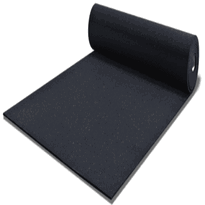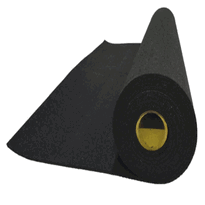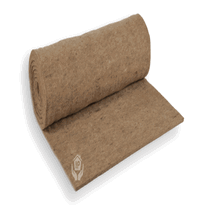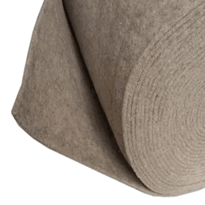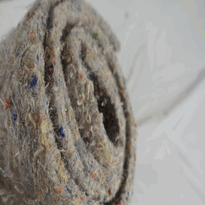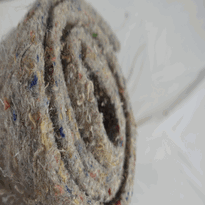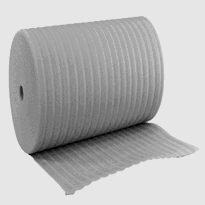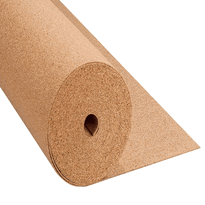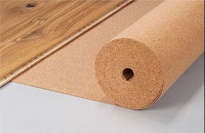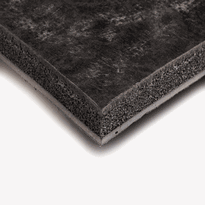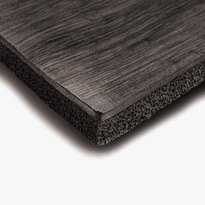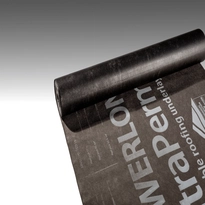Breathable Carpet Underlay
Breathable carpet underlays are typically made from materials such as polyurethane foam, rubber composites, felt, and recycled fibres. These specially designed materials allow moisture vapour to escape, helping to maintain a healthy indoor environment. At the same time, they provide essential insulation, support, and durability for a variety of spaces.
Using breathable underlays can help prevent dampness and reduce the risk of mould growth, thereby improving indoor air quality. They also contribute to extending the lifespan of carpets, protecting your investment over time.
These underlays are suitable for residential homes, commercial premises, and areas prone to moisture. Proper installation and regular maintenance are key to maximising their benefits.
Understanding the best uses of breathable carpet underlays and selecting the right type for your specific needs can help ensure comfort, hygiene, and long-term performance in your space.
Types of Materials Used in Breathable Carpet Underlay
Breathable carpet underlay employs a range of materials designed to enhance comfort, durability, and environmental sustainability. Each material offers specific benefits tailored to different types of flooring and usage scenarios. Polyurethane (PU) foam is among the most widely used materials due to its lightweight and adaptable properties. It provides an effective balance of affordability, comfort, and thermal insulation, making it suitable for both residential and commercial settings. Rubber-based underlays, such as sponge rubber and crumb rubber, are valued for their robustness and ability to reduce noise. They also support underfloor heating systems. Crumb rubber, in particular, is notable for incorporating recycled materials, thereby emphasising sustainability and environmental responsibility. Felt underlays, primarily crafted from natural wool, deliver excellent cushioning and noise insulation. As a natural material, felt underlay is also recognised as an eco-friendly option, contributing to environmentally conscious flooring solutions. Additionally, combination and recycled material underlays are increasingly popular. These products enhance versatility, improve performance, and offer environmental benefits, effectively meeting diverse flooring requirements across the UK. Recycled materials are often used to create more sustainable underlay options, promoting environmentally responsible flooring choices. Integrating materials similar to Cold Shrink Termination that are environmentally friendly can further improve the sustainability of underlay products.
Key Features and Benefits of Breathable Underlays
Breathable underlays offer a range of features that significantly enhance their effectiveness in improving flooring performance and comfort. Understanding these features helps in selecting the right underlay for your needs.
Moisture Management
One of the primary benefits of breathable underlays is their moisture management capabilities. Designed to allow vapour to escape, they prevent the build-up of dampness and mould beneath the carpet. This not only maintains a healthier environment but also extends the lifespan of both the carpet and the underlay. Moisture Control Proper installation and material choice further optimize moisture management, ensuring long-term protection against damp-related issues. Additionally, the inclusion of fire-resistant materials in some underlays can further enhance safety features.
Breathability
The breathability of these underlays ensures continuous air circulation beneath the flooring. Improved airflow reduces moisture accumulation, which can otherwise lead to deterioration of the carpet and subfloor. This property helps maintain a fresh and hygienic environment in your home or commercial space. Many modern breathable underlays incorporate advanced foam or breathable membrane technology to enhance airflow and moisture dissipation.
Thermal Insulation
Breathable underlays contribute to thermal insulation, helping to maintain a consistent room temperature across different seasons. By reducing heat loss through the floor, they enhance comfort and can assist in energy efficiency, leading to potentially lower heating costs. This feature is especially beneficial in colder climates, where maintaining warmth is crucial for comfort.
Durability
Designed to withstand regular wear and tear, durable breathable underlays increase the overall lifespan of your carpet and the underlay itself. Their resilience means they absorb impact and resist degradation over time, ensuring long-term performance. The use of high-quality materials such as recycled fibers or reinforced foam enhances durability while supporting sustainability efforts.
Material Variety
Breathable underlays are available in various materials, offering options to suit different needs and preferences. This versatility makes them suitable for a wide range of applications, whether in residential or commercial settings, and for different types of flooring. Choosing the right material can optimize specific features like soundproofing or moisture resistance based on individual requirements.
Common Applications for Breathable Carpet Underlay
In residential and commercial settings across the UK, breathable carpet underlays are widely utilised to enhance comfort, durability, and indoor air quality. In homes, they provide a soft, comfortable foundation for carpets in living rooms and bedrooms, while also helping to reduce noise and prevent the build-up of mould, allergens, and dust. Proper support supports carpet to withstand daily wear and tear, preserving the overall appearance and longevity of the flooring. In high-traffic areas such as hallways, stairs, and home offices, their durability is essential in withstanding frequent use and exposure to moisture. Additionally, breathable underlays facilitate the efficient operation of underfloor heating systems, ensuring heat penetrates evenly and improves energy efficiency. This is particularly important in colder regions or during winter months when insulation properties help maintain consistent indoor temperatures. Within commercial environments—including office buildings, hotels, and healthcare facilities—they improve acoustic performance, comfort, and hygiene standards. These underlays are especially beneficial in moisture-prone spaces such as basements, bathrooms, and regions experiencing high humidity or seasonal flooding. Their moisture-resistant properties are essential in maintaining hygiene and preventing structural issues over time.
Tips for Selecting the Right Underlay for Your Space
Selecting the appropriate underlay for a specific space requires careful consideration of multiple factors to ensure optimal performance and longevity.
First, assess comfort needs by choosing thicker underlays for increased cushioning and softer materials for plush carpets, especially in areas where foot comfort is a priority. Layer of cushioning between subfloor and carpetThis underlay provides a comfortable surface and helps in maintaining the carpet’s shape over time. Additionally, selecting materials with suitable insulation properties can contribute to energy efficiency by reducing heat loss through the floor.
Density plays a crucial role; higher density underlays provide better support and maintain their shape over time, reducing premature wear. It's important to match the underlay to the carpet type—firmer, denser options are suitable for loop pile carpets to prevent stretching, while softer underlays enhance comfort for plush or cut pile carpets.
Consider room usage and foot traffic; high-traffic areas demand durable, dense materials to withstand repeated use without compromise.
Additionally, evaluate sound insulation and thermal properties. Opting for breathable, insulating underlays can help regulate indoor climate and reduce noise, creating a more comfortable and inviting environment.
Always select an underlay that suits both the specific requirements of the space and your personal preferences, ensuring your carpet remains comfortable, supportive, and durable over time.
Maintenance and Longevity of Breathable Carpet Underlay
Effective maintenance of breathable carpet underlay relies on regular cleaning routines, vigilant inspection for signs of damage, and prompt intervention to prevent deterioration. Regular vacuuming using a sturdy, brush-equipped vacuum cleaner removes loose dirt and debris, especially in high-traffic areas, helping to sustain the underlay’s integrity. Removing carpet completely allows for thorough access and ensures all parts of the underlay are properly maintained. Immediate spill clean-up with a damp cloth or mild oxygen bleach can prevent staining and fibre deterioration. It is vital to monitor the underlay for signs of water damage or mould growth. Any affected sections should be replaced promptly to maintain proper airflow and prevent mould proliferation. Using industrial fans or dehumidifiers aids in thorough drying following cleaning activities, further reducing moisture accumulation within the carpet system. Maintaining moderate indoor humidity levels—ideally between 40–60%—helps minimise brittleness and mould growth. Proper installation procedures, routine professional deep cleaning, and preventive measures such as the use of protective mats over high-traffic areas can extend the lifespan of the underlay and preserve overall carpet quality. Additionally, understanding the breathable qualities of the underlay can help in choosing appropriate cleaning and maintenance methods to sustain its performance.
Conclusion
Choosing the appropriate breathable carpet underlay enhances comfort, durability, and indoor air quality. Recognising the different materials, key features, and suitable applications allows for informed decision-making that aligns with specific needs. Proper maintenance can extend the lifespan of the underlay, helping to maintain its functional benefits over time. By following practical tips for selection and care, property owners can maximise the value of their investment, ensuring a stable, supportive foundation for carpets while promoting a healthier indoor environment.
